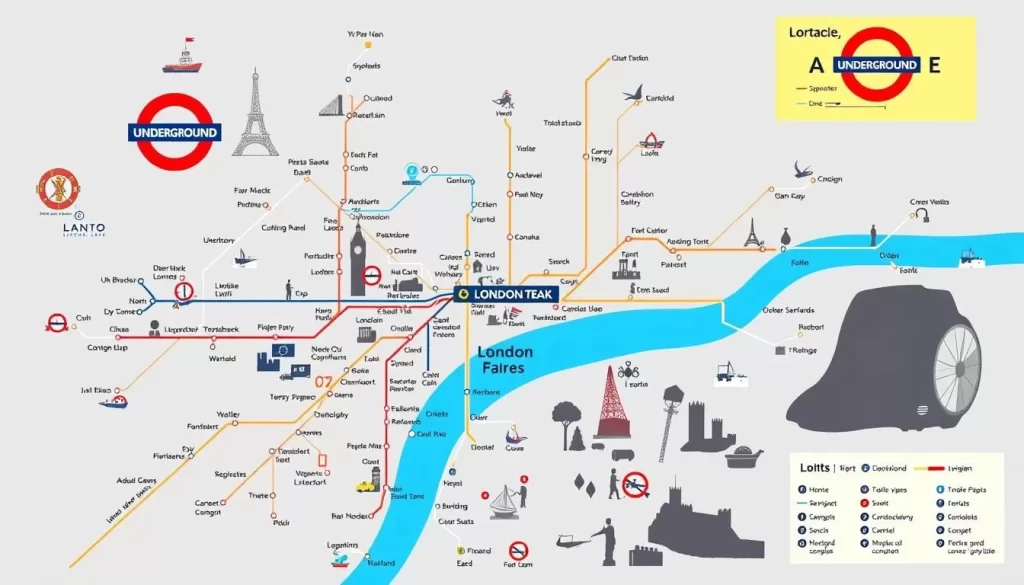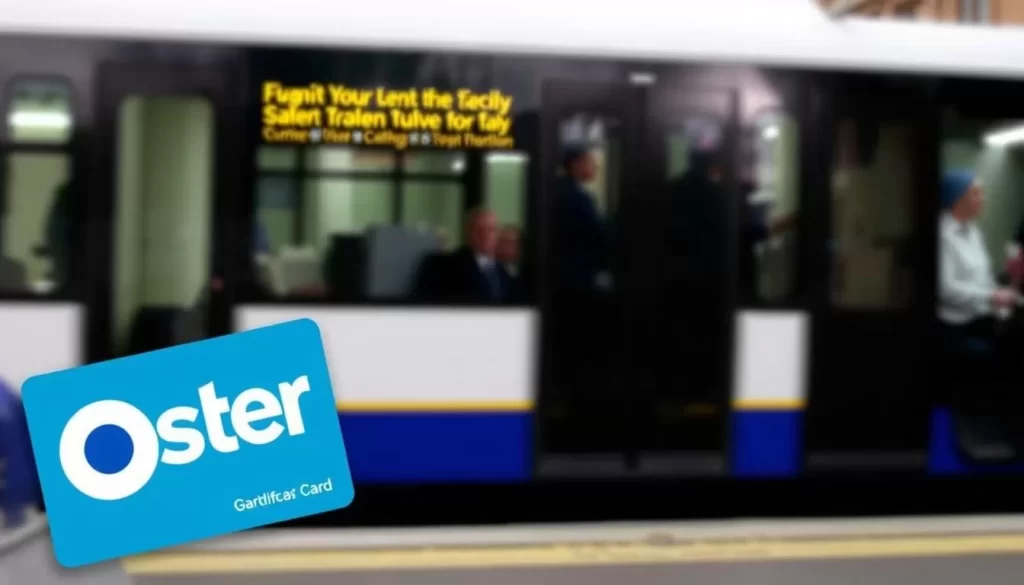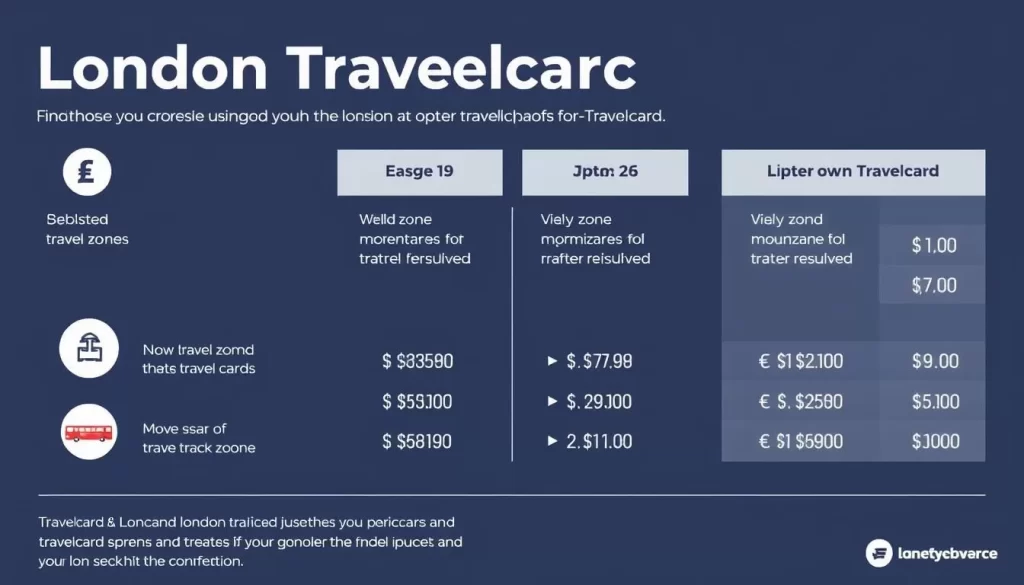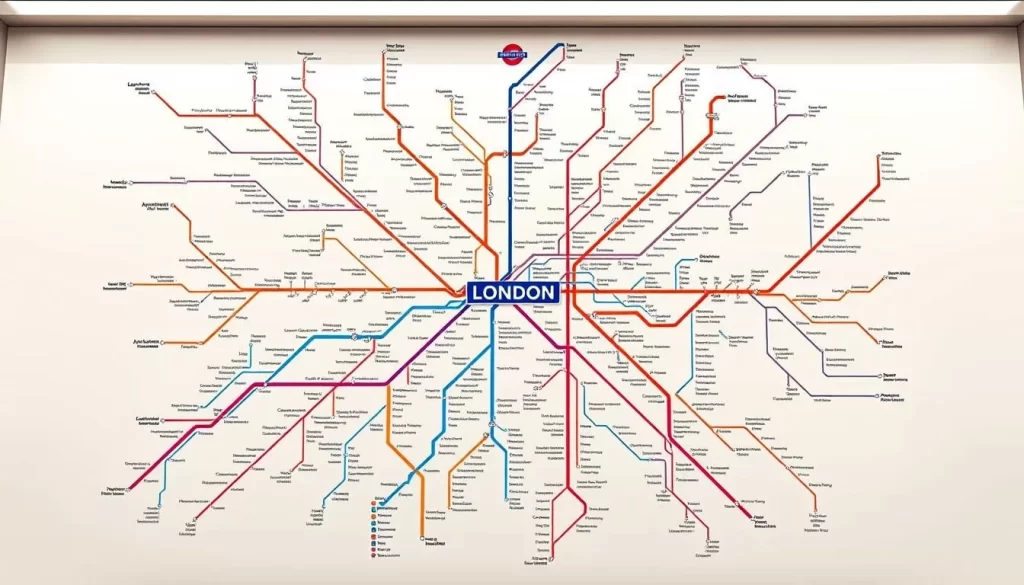Navigating a new city can be daunting, but London’s comprehensive transport network makes it relatively easy to get around. With a range of options available, including the Underground, buses, and boats, you’ll be able to travel efficiently and enjoy all that the city has to offer.
Whether you’re embarking on a short journey or exploring the outskirts, understanding London’s integrated transport system is key. You can use an Oyster card or contactless payment methods to make your travel smoother. By choosing the right transport options, you’ll be able to get around London with ease.
Overview of London’s Transportation Network
Navigating London is made easy by its vast and integrated transport system. London boasts one of the world’s most extensive public transportation networks, connecting all areas of the city.
The Integrated Transport System
The network consists of multiple interconnected systems, including the Underground (Tube), buses, Overground trains, DLR (Docklands Light Railway), trams, river services, and cycling infrastructure. Transport for London (TfL) manages the entire network, ensuring relatively seamless connections between different modes of transport.
- The system is divided into zones (1-9), with Zone 1 covering central London.
- Recent fare changes, implemented on March 2, 2025, have affected various services across the network.
Understanding how these different transport modes complement each other is key to efficiently navigating the city. The network operates extensively during daytime hours with reduced night services on weekends and select routes.
| Transport Mode | Coverage | Frequency |
|---|---|---|
| Underground (Tube) | Central London & suburbs | High |
| Buses | Extensive city coverage | High |
| Overground trains | Suburban areas | Medium |
Understanding the London Underground (Tube)

As the oldest underground railway in the world, the London Underground is a marvel of modern transportation. Dating back to 1863, it has evolved into a comprehensive network that facilitates easy travel across London.
Navigating the Iconic Subway System
- The London Underground, affectionately known as “the Tube,” comprises 11 lines identified by distinct colors on the Tube map, making it relatively straightforward to plan your journey.
- Trains run frequently, typically every 2-5 minutes during peak hours and 5-10 minutes during off-peak times, ensuring you can travel efficiently.
- The Underground serves 270 stations across London, with many central stations connecting multiple lines for easy transfers.
- Understanding the difference between “stopping at all stations” services and “fast” services can save you significant travel time on some lines.
- During rush hours, trains can become extremely crowded, especially on central sections of popular lines.
- The Tube map is a schematic representation rather than geographically accurate, meaning some stations that appear far apart on the map might actually be within walking distance above ground.
Navigating London’s Iconic Red Buses
As you navigate London, the iconic red buses are a practical and scenic way to travel. London’s red double-decker buses are not just iconic symbols of the city but also an extensive transportation network.
![]()
Getting Around on Double-Deckers
The bus network in London is vast, comprising over 700 routes with more than 19,000 bus stops throughout Greater London. This extensive coverage ensures that you can reach various places across the city, even where the Tube doesn’t services.
Unlike the Tube, traveling by bus allows you to see the city as you journey, making it ideal for tourists wanting to experience London’s streetscapes. You can enjoy the view while on your journey on these iconic buses.
- All London buses are cashless; you must use an Oyster card, contactless payment card, or valid travel pass to board.
- The “Hopper fare” allows unlimited bus and tram journey within one hour of first touching in, all for the price of a single fare.
- Most bus routes operate from around 5:00 AM until midnight, with many central routes offering 24-hour “Night Bus” services on major roads.
| Feature | Description | Benefit |
|---|---|---|
| Cashless System | All London buses require Oyster or contactless payment | Convenient and efficient boarding |
| Hopper Fare | Unlimited bus and tram journeys within one hour | Cost-effective travel |
| Night Bus Services | 24-hour services on major routes | Reliable transportation at any time |
It’s worth noting that while standard folding bikes are generally allowed on buses outside of peak hours, non-folding e-bikes are banned on most bus services. This ensures a comfortable bus ride for all passengers.
Payment Options for London Public Transport
To navigate London efficiently, it’s essential to know your payment choices for public transport. London’s public transport system is designed to accommodate different travel needs.
Understanding Your Fare Choices
You have several options to pay for your travel in London. These include Oyster cards, contactless payment cards, mobile payments, and paper tickets. Oyster cards and contactless payments offer transport fares at the best rates.
- Oyster cards are reloadable and can store pay-as-you-go credit or travel passes.
- Contactless bank cards work similarly to Oyster cards but eliminate the need for a separate card.
- Daily and weekly fare capping applies to both Oyster and contactless payments.
For short stays, Oyster cards offer convenience, while contactless payments provide a similarly cost-effective solution without the need to purchase a separate card.
The Oyster Card: Your Travel Companion

For seamless travel across London, consider purchasing an Oyster card, your key to the city’s transport network.
Benefits and Features
The Oyster card offers numerous benefits for travelers. Here are some of its key features:
- The Oyster card is a reusable plastic smartcard that serves as your key to London’s public transportation system, allowing seamless travel across all zones.
- When purchasing an Oyster card, you’ll pay a £7 refundable deposit plus whatever credit you wish to add (minimum £10 for standard cards).
- Oyster cards automatically calculate the cheapest fare for your travel and apply daily and weekly caps to ensure you never pay more than necessary.
- You can register your Oyster card online for additional benefits, including automatic top-up, journey history, and protection against loss or theft.
- The card works on all TfL services, including Tube, buses, DLR, London Overground, TfL Rail, trams, River Bus services, and most National Rail services within London, making it a convenient way to get around.
By using an Oyster card, you can enjoy a hassle-free journey across London, making it an ideal choice for both locals and visitors.
Visitor Oyster Cards vs. Regular Oyster Cards
To get around London efficiently, understanding the differences between Visitor Oyster Cards and regular Oyster Cards is crucial. Both cards offer convenient travel across various transport zones and services in London.
Choosing the Right Option
Visitor Oyster Cards are designed for tourists and can be purchased online before arriving in London. They cost £5 (non-refundable) and come pre-loaded with credit (minimum £10), offering special discounts at selected restaurants, shops, and attractions. In contrast, regular Oyster Cards are available at any Tube station upon arrival, with a £7 refundable deposit.
- Visitor Oyster Card: Costs £5, non-refundable, pre-loaded credit, and special discounts.
- Regular Oyster Card: £7 refundable deposit, available at Tube stations upon arrival.
While Visitor Cards must be shipped to your home address, potentially incurring shipping costs, regular Oyster Cards can be obtained immediately upon arrival. For most visitors staying less than a week, the practical differences are minimal, making convenience a key deciding factor.

Using Contactless Payment Cards in London
London’s public transport system now supports contactless payments, making your journey smoother. You can use your contactless credit or debit card to pay for your travel in London.
Tap and Go Convenience
This method offers the same convenience and pricing as Oyster cards. Simply tap your card on the reader at station gates or on buses. Always use the same card for all your journeys throughout the day to ensure proper fare capping is applied. You can also use mobile payment systems like Apple Pay or Google Pay.
- Contactless payment cards offer the same convenience and pricing as Oyster cards.
- Check with your bank regarding international transaction fees before using your foreign-issued contactless card.
London, England: Public Transportation & Getting Around Zones
London’s public transport is structured around a series of concentric zones that dictate travel costs. Understanding these zones is crucial for navigating the city efficiently.
Understanding London’s Travel Zones
London’s public transport network is divided into nine concentric zones. Zone 1 covers the city center, while Zone 9 reaches the outermost suburbs.
- Most major tourist attractions and central business districts are in Zones 1 and 2, where transport options are frequent.
- Fares increase as you travel across zone boundaries, with journeys within Zone 1 being the least expensive.
- On buses and trams, flat fares apply regardless of the zones you travel through.
Understanding zone boundaries can help with accommodation choices. Staying in Zones 3-4 can reduce lodging costs while maintaining access to central attractions. Major interchange stations often sit on zone boundaries, allowing you to touch in or out in the cheaper zone.

Day Passes and Travelcards: Are They Worth It?

Day passes and travelcards are two convenient options for traveling around London, but are they worth the cost? These options offer unlimited travel within your chosen zones for a fixed price, potentially saving you money if you make multiple journeys.
Comparing Value for Money
To determine whether day passes or travelcards are right for you, consider your travel plans. A Day Travelcard for Zones 1-2 is worthwhile if you plan to make four or more trips in one day, as it costs more than three single Tube journeys.
Weekly Travelcards become cost-effective if you’ll be using public transport for at least 5 days and making multiple journeys each day. You should also consider the type of Day Travelcard: Anytime Day Travelcards are valid all day, while Off-peak Day Travelcards (slightly cheaper) can only be used after 9:30 AM on weekdays and all day on weekends.
- Day Travelcards and 7-day passes offer unlimited travel within your chosen zones.
- Automatic daily capping applies when using Oyster or contactless payment, essentially converting your pay-as-you-go payments into a Day Travelcard once you reach the price threshold.
- For most visitors making 2-3 journeys per day, pay-as-you-go with daily capping on Oyster or contactless often works out cheaper than purchasing Travelcards in advance.
Navigating the River Thames: Boat Services
You can experience London from a different angle by utilizing the River Thames’s boat services. The River Thames offers a unique blend of practical transportation and scenic tours.
River Transport Options
The Thames Clippers service, now rebranded as Uber Boat by Thames Clippers, provides regular commuter services with 23 piers between Putney and Woolwich. Operating at 20-minute intervals during peak times, it’s a convenient option for both locals and tourists.
River services are particularly useful for accessing attractions along the Thames, including the Tower of London, Shakespeare’s Globe, Tate Modern, and Greenwich. You can use your Oyster card or contactless payment, benefiting from a 10% discount compared to paper tickets.
- The River Roamer ticket offers unlimited hop-on, hop-off travel for a full day, ideal for tourists.
- During summer, additional leisure-focused services operate, including circular cruises and themed evening boat trips.
While river services might be slower than the Tube, they offer unparalleled views of London’s landmarks and can be faster than road transport during peak traffic times.
Santander Cycles: London’s Bike Sharing System

With over 750 docking stations and 11,500 bikes, Santander Cycles is revolutionizing the way you travel around London. This bike-sharing service offers an affordable and flexible way to explore various places across the city.
Exploring on Two Wheels
Santander Cycles allows you to hire bikes for as little as £2 for unlimited journeys up to 30 minutes each within a 24-hour period. The bikes are designed for durability, featuring three gears and puncture-resistant tires, making them suitable for navigating London’s busy roads. You can plan your cycle routes using TfL’s cycling journey planner, which suggests ways to travel based on your cycling confidence.
Walking in London: When It’s Faster Than Public Transport
Walking is a hidden gem for navigating London’s busy streets. You’ll be surprised at how quickly you can walk between London’s landmarks, making it a viable alternative to public transport for short journeys.
The Pedestrian Advantage
Many central London Tube stations are surprisingly close together above ground. In fact, walking is often faster than taking the Tube for short journeys. Transport for London (TfL) provides a walking times map, showing how long it takes to walk between stations on the same line. This map reveals that many “one-stop” journeys take just 5-10 minutes on foot.
- Famous examples include Covent Garden to Leicester Square, which takes just 4 minutes walking, and Mansion House to Cannon Street, a mere 3 minutes walking.
- Walking not only saves you time during peak hours but also allows you to discover hidden gems, charming streets, and local shops you might otherwise miss.
- Central London is highly walkable, with major attractions like Buckingham Palace, Westminster Abbey, Trafalgar Square, and Covent Garden all within a 20-30 minute walk of each other.
- The Thames Path provides a scenic walking route, connecting major riverside attractions while avoiding traffic congestion.
- Walking maps are available at most Tube stations, and street signs throughout central London include walking times to nearby landmarks and stations, making it easier for you to get around.
By incorporating walking into your journey, you can experience London at a more leisurely pace, enjoying the sights and sounds of the city. So next time you’re planning a short trip, consider walking – it might just be the fastest way to get around.
Essential Apps for Navigating London

To get around London, you’ll need the right apps on your smartphone. These digital tools make traveling around the city a breeze, providing real-time service updates and journey planning.
Digital Tools for Seamless Travel
- The official TfL Go app provides real-time service updates, journey planning, and accessible route options tailored to your specific needs.
- Citymapper has become the go-to navigation app for many Londoners, offering comprehensive journey planning that compares all transport modes.
- Google Maps provides reliable navigation with real-time public transport information.
- The Bus Times London app focuses on bus service information, showing live arrivals for any bus stop.
- Uber and Bolt apps offer convenient alternatives when public transport isn’t suitable.
- The Santander Cycles app allows you to hire bikes directly and plan cycling routes.
- River Thames boat service apps like Thames Clippers provide schedules and allow ticket purchases.
Most of these apps work offline or with minimal data usage, making them ideal for international visitors.
Accessibility Options on London Public Transport
You can navigate London easily, thanks to its increasingly accessible public transport network. London’s transport system is designed to be inclusive, with various features to assist travelers with different needs.
Inclusive Travel Solutions
Several initiatives have been implemented to improve accessibility across London’s public transport. For instance, around 80 Tube stations now offer step-free access from street to platform, and this number is gradually increasing.
- All London buses are equipped with ramps and designated wheelchair spaces, making them highly accessible.
- The DLR and London Overground networks offer better accessibility than the Tube, with most stations providing step-free access.
- TfL’s Turn-up-and-go service at staffed stations provides assistance without pre-booking for passengers with accessibility needs.
The TfL Access service allows you to book assistance up to 24 hours in advance for journeys involving multiple transport modes. Additionally, the TfL Go app includes an accessibility mode to help plan your journey using only step-free stations and accessible transport options.
Audio and visual announcements are standard across the network, and many stations have tactile paving and braille signage for visually impaired travelers, ensuring access to information for all.
Money-Saving Tips for London Transport
You can maximize your travel budget in London with a few simple tips. London’s public transport network is one of the most comprehensive in the world, but it can be expensive if you don’t know how to navigate it efficiently.
Maximizing Value on Your Travels
To save money on London’s public transport service, consider the following tips:
- Use the Hopper fare for unlimited bus and tram journeys within an hour for a single fare of £1.75.
- Stay in accommodations in Zones 2-4 to reduce lodging and daily travel costs to central London.
- Opt for buses instead of the Tube when possible, as bus fares are flat-rate regardless of distance.
- Walk between closely situated Tube stations in central London to avoid short one-stop journeys.
- Travel during off-peak hours when fares are lower on the Tube and rail service.
- Benefit from daily and weekly capping on Oyster and contactless payments for the best value.
- Children under 11 travel free on most London transport services when accompanied by an adult.
- Consider the London Pass if you plan to visit multiple paid attractions, which includes travel.
By implementing these strategies, you can significantly reduce your travel expenses and enjoy exploring the city without breaking the bank.
![]()
Conclusion
Your London adventure begins with understanding the city’s versatile transport network. To maximize your experience, consider using an Oyster card or contactless payment.
Making the Most of London’s Transport
London offers multiple transport options, and with proper planning, the network becomes an asset to exploring the city.
The above is subject to change.
Check back often to TRAVEL.COM for the latest travel tips and deals.
Here are some Tours & Sightseeing suggestions that might pique your interests!